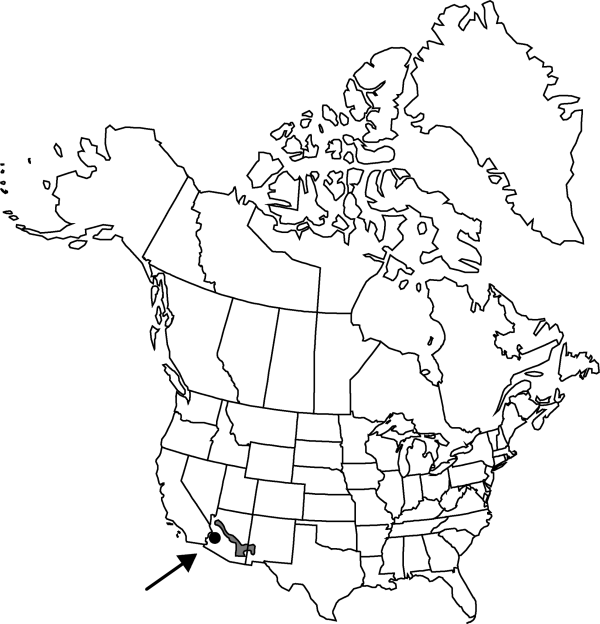Difference between revisions of "Mammillaria viridiflora"
Mamm.-vergl.-Schlüssel, 36. 1933.
FNA>Volume Importer |
imported>Volume Importer |
||
| (3 intermediate revisions by 2 users not shown) | |||
| Line 8: | Line 8: | ||
}} | }} | ||
|common_names=Green flower nipple cactus | |common_names=Green flower nipple cactus | ||
| + | |special_status={{Treatment/ID/Special_status | ||
| + | |code=E | ||
| + | |label=Endemic | ||
| + | }} | ||
|basionyms={{Treatment/ID/Basionym | |basionyms={{Treatment/ID/Basionym | ||
|name=Neomammillaria viridiflora | |name=Neomammillaria viridiflora | ||
|authority=Britton & Rose | |authority=Britton & Rose | ||
| + | |rank=species | ||
|publication_title=Cact. | |publication_title=Cact. | ||
|publication_place=4: 153. 1923 | |publication_place=4: 153. 1923 | ||
| Line 17: | Line 22: | ||
|name=Mammillaria orestera | |name=Mammillaria orestera | ||
|authority=L. D. Benson | |authority=L. D. Benson | ||
| + | |rank=species | ||
}} | }} | ||
|hierarchy=Cactaceae;Cactaceae subfam. Cactoideae;Mammillaria;Mammillaria viridiflora | |hierarchy=Cactaceae;Cactaceae subfam. Cactoideae;Mammillaria;Mammillaria viridiflora | ||
| Line 41: | Line 47: | ||
-->{{#Taxon: | -->{{#Taxon: | ||
name=Mammillaria viridiflora | name=Mammillaria viridiflora | ||
| − | |||
|authority=(Britton & Rose) Boedeker | |authority=(Britton & Rose) Boedeker | ||
|rank=species | |rank=species | ||
| Line 55: | Line 60: | ||
|publication title=Mamm.-vergl.-Schlüssel, | |publication title=Mamm.-vergl.-Schlüssel, | ||
|publication year=1933 | |publication year=1933 | ||
| − | |special status= | + | |special status=Endemic |
| − | |source xml=https:// | + | |source xml=https://bitbucket.org/aafc-mbb/fna-data-curation/src/2e0870ddd59836b60bcf96646a41e87ea5a5943a/coarse_grained_fna_xml/V4/V4_458.xml |
|subfamily=Cactaceae subfam. Cactoideae | |subfamily=Cactaceae subfam. Cactoideae | ||
|genus=Mammillaria | |genus=Mammillaria | ||
Latest revision as of 21:58, 5 November 2020
Plants usually unbranched. Roots: upper portion of primary root somewhat thickened and succulent proximally, otherwise fibrous. Stems flat-topped or spheric to short cylindric, ± flaccid; tubercles (5–)6–15(–17) mm; axils appearing naked; cortex and pith mucilaginous; latex absent. Spines 19–31(–34) per areole, usually white or brown-and-white (rarely bright reddish brown), glabrous (to hoary); radial spines (13–)15–23(–31) per areole, in 1 series, bristlelike, stiff; central spines 1–2(–4) per areole, porrect or strongly projecting, all hooked, (7.5–)10–20(–31) × 0.2–0.4 mm; subcentral spines 0 [several in M. barbata]. Flowers (1.5–)2–3.5(–3.9) × (1.2–)1.8–3(–4.2) cm; outermost tepal margins long fringed, reaching 1 mm; inner tepals usually white, cream, pale tan, greenish white, or pale rose-pink, sometimes appearing pale orange proximally due to reflection of yellow anthers, usually with ± sharply defined pink midstripes (often suffused with brown, yellow, pink, red, purple, or green, darkest and brightest distally on most plants), (7.5–)12–17(–21) mm; stigma lobes green or yellow-green. Fruits green or purple, ovoid or obovoid, (6–)10–16(–22) × (4–)6–12(–13) mm, juicy throughout; floral remnant persistent. Seeds chocolate brown with darker reticulation, 1.3 × 0.9 mm, pitted; testa hard; anticlinal cell walls straight; interstices conspicuously narrower than pit diameters; pits bowl-shaped. 2n = 22.
Phenology: Flowering spring; fruiting fall.
Habitat: Semidesert grasslands, interior chaparral, pinyon-juniper and oak woodlands, crevices, boulders, canyon sides and gravelly igneous substrates
Elevation: (800-)1400-2000 m
Discussion
Mammillaria viridiflora is closely related to M. barbata Engelmann of Mexico, which has priority if the species are combined.
Selected References
None.
